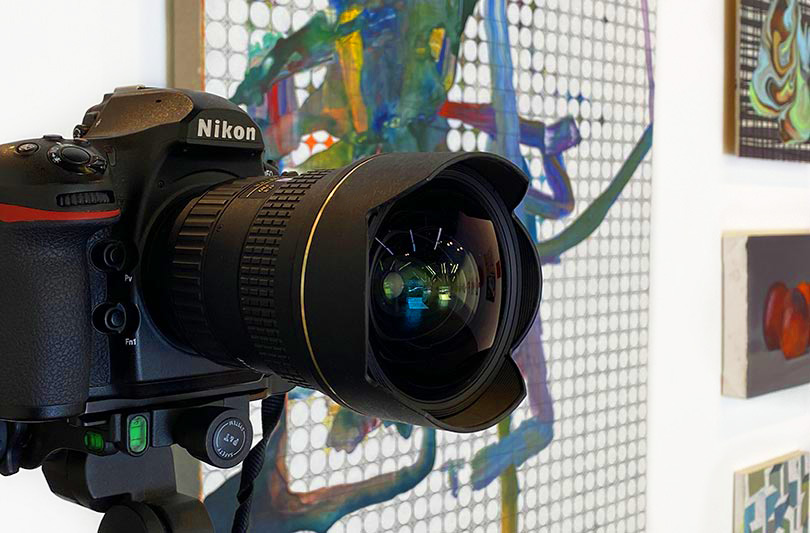8 Tips for Artists to Prepare for a Photo Documentation Session

You’re an artist and you’ve spent months even years creating your wonderful works of art from paintings to sculptures to mixed media. What’s next?
Photo Documentation
Now that your body of work is complete, you need to properly document your artwork with a professional photo documentation session. You will use these professionally shot images for gaining interest from curators, gallerists, and collectors. They can be used for marketing and PR, and for showcasing your work on your website and social media channels. These high-resolution photos can be reproduced as posters, or published in magazines for articles or advertising. They can also be used for reproduction-quality prints and ultimately to archive each piece for posterity.
How to prepare for your photo documentation session:
What do you need to do to prepare to make the best use of your session? These tips are provided to help you get the most out of your session.
1. Hire a Professional Photographer
A professional photographer will have the proper camera, lenses, filters, and lighting equipment to document your artwork. Ask your photographer if they have done archival work before and at what resolution they will be shooting. Thirty-six (36) megapixel resolution or higher is necessary to properly document your art. Most photographers charge by the hour or in ½ day or full-day shoot rates. Travel expenses or photo editing services after the shoot are usually billed in addition to the shoot rates.
2. Create a Shot List
Make a list of all artworks along with their approximate sizes. Think about the order in which you’d like to shoot them and have them ready to quickly swap out. To make the best use of your photographer’s time (and your money) keep like-sized pieces together so that the lighting and camera setup can be reused for several shots.
3. Let it Shine
Let the photographer know if any of the artworks have reflective surfaces. For example, if your art has been framed and is behind glass, or if glossy or metallic finishes have been applied, special equipment is needed to properly photograph them. Also, let your photographer know if any of your artworks are heavy, extremely large, or extremely small which may require special equipment and/or space as well.
4. Location, Location, Location
Decide where your art will be shot. You will need a clean white wall and adequate space for lighting and camera equipment. Diffused natural light may be beneficial depending on the finish and size of your art. The presence of natural light as opposed to tungsten or fluorescent light is often helpful although direct sunlight can lead to unwanted reflections. Take a cell phone picture of your space to share with the photographer in advance.
If you do not have adequate space to properly shoot your art, consider renting a viewing space or consider shooting outside in the open shade. Keep in mind that you may need to hire your photographer to drop out the backgrounds if not shot on a clean white wall.
5. Editing after the Shoot
The photographer will be shooting raw photos for the best possible resolution, sharpness, contrast, clarity, and color. Raw images should be edited in Lightroom or Capture One. The photos need to be properly color corrected, sharpened, and adjusted for brightness/contrast. This process often takes longer than the photo shoot itself. It is important to communicate with your photographer about the total budget for the shoot with photography and editing time included. Clear communication will result in the best possible image outcome.
Most photographers are willing to invoice hourly or in half-day increments for both the shoot and the editing, but both steps are required for the best outcome.
6. Delivery
How will you be using your newly shot photos? Let your photographer know what file formats you will need for the final delivery. Here are some helpful guidelines on what to request:
- Archival, Museum Catalog, Digital Reproduction: RAW, PSD
- Print (posters, magazines): PSD
- Website, Social Media: JPG
7. Long-Term Storage
Your photographer will usually deliver the files to you electronically via DropBox, WeTransfer or loaded up on a customer-owned hard drive. It is your responsibility to store your images as the photographer may delete them after a period of time.
8. Ownership
Make sure that your photographer agrees that once your invoices are paid in full you will be the owner of the photos so that you can use them for whatever purposes you have in perpetuity.

Time permitting, we often shoot artist portraits with their artworks in their studio.
We have shot hundreds of works of art for dozens of artists over the years. These tips are a result of our many experiences working together with artists, galleries, and collectors. If you need a photographer for your photo documentation project please contact 5D Spectrum.
Hire 5D Spectrum to shoot your photo documentation session today!